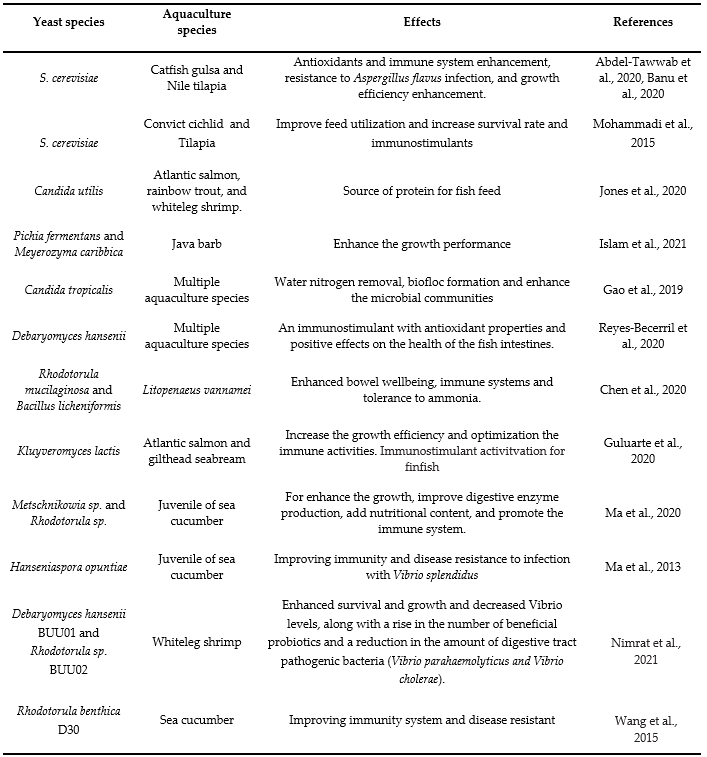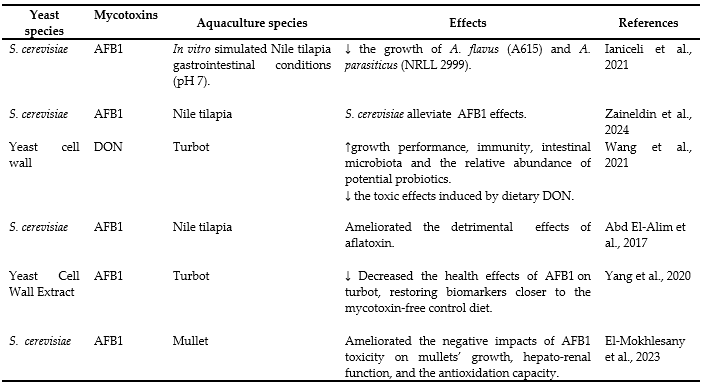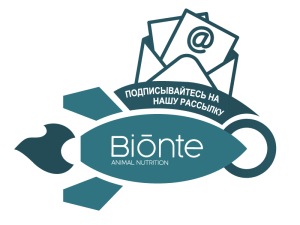Aquaculture, the world’s fastest-growing food production sector, requires nutritional solutions adapted to the specific needs of the farmed species, as well as supplements and additives to promote organism health. The utilization of probiotics, prebiotics, synbiotics, and parabiotics as alternatives to conventional feed has been proven to have several benefits, including enhancing overall health, strengthening the gut against harmful microorganisms, and reducing inflammation.
Within the aforementioned nutrients, yeasts represent a valuable resource for aquaculture, whether used in their entirety or as constituent components, serving as supplements in animal feed. Due its nutritional value and the presence of bioactive compounds, yeast-based products have been recognised as an emerging alternative ingredient. Among yeast species, Saccharomyces cerevisiae (S. cerevisiae) represents the prominent choice in aquaculture, especially for its capacity to promote the health of various farmed species. Numerous studies conducted in fish and crustaceans have shown that S. cerevisiae and its cellular constituents, including β-glucans, mannanoligosaccharides, glucooligosaccharides, and enzymes, contribute to improved growth, morphological development, physiological functions of the host’s digestive system, and enhanced immune responses (Goh et al., 2022).
Yeasts as probiotics
S.cerevisiae, mainly used as probiotic, represents a group of living microorganisms recognized for their capacity to confer health benefits upon the host. In the context of aquaculture sustainability, probiotics play a pivotal role by mitigating the adverse effects of antibiotics and other antimicrobial agents, thus contributing significantly to enhanced animal health. Consequently, probiotics, hailed as highly promising eco-friendly feed additives, have received considerable attention for their potential to enhance aquatic production (Chowdhury and Roy, 2020).
The mechanisms through which probiotics influence gut microbiota are multifaceted. They can adhere to the digestive mucosa, engage in competition for adhesion and/or exclusion, generate beneficial molecules and chemical signals for the host, and some probiotics show the capability to effectively hinder pathogenic colonization (Vargas-Albores et al., 2021). Brewer’s yeast, S. cerevisiae, has emerged as a successful probiotic in modulating the gut microbiota of fish and crustaceans, thereby augmenting the intestinal functionality of the host (Caruso et al., 2022; Mahdy et al., 2022).
These microbial products can be administered as gut probiotics, incorporated into feed, involving yeast dispensed orally through formulated or encapsulated supplements in raw feed. Alternatively, they can be introduced as water probiotics, where yeast is directly added to the aquatic environment, colonizing external surfaces such as the skin or gills, or internal surfaces through ingestion. Furthermore, S. cerevisiae exhibits the potential to enhance the water quality through the elimination of organic substances, contaminants, and pathogens; thus suppressing the proliferation of pathogenic bacteria by nutrient competition (Rohani et al., 2022; Yilmaz et al., 2022). Thus, some of the yeast species are used as supplementary feed in aquaculture which, in turn, improve the growth efficiency, resistance to fish disease, quality of water, and diversity of microbial communities, as shown in Table 1.

Table 1. The yeast species commonly used in aquaculture nutrition and its effects.
Compelling evidence shows that the inclusion of yeast in feed enhances growth performance, feed utilization, and hematobiochemical indices. These indices are vital indicators of health status, covering parameters such as hemoglobin, red blood cell count, white blood cell count, and glucose levels in both fish (Jahan et al., 2021) and shrimp (Mameloco and Traifalgar, 2020). As essential markers of physiological stress, they are crucial for diagnosing diseases and evaluating stress responses to different factors.(Rohani et al., 2022).
Furthermore, the utilization of probiotics has been suggested to confer health advantages to farmed fish. Probiotics, in this context, exhibit the capacity to booster the fish’s resistance against diseases or generate substances that hinder pathogenic organisms from inducing illnesses. These bioactive compounds can hamper the proliferation of pathogenic microorganisms both within the intestinal tract and on the external surfaces of cultured fish. In fact, the supplementation of S. cerevisiae in the diet exerts a discernible impact on the immune system of both fish and crustaceans (Mahdy et al., 2022).
It has been documented that the inclusion of yeast in the diet plays a significant role in fortifying the cells of the immune system, including phagocytic cells, monocytes, macrophages, polymorphonuclear leukocytes (neutrophils), and natural killer (NK) cells, thereby enhancing innate immunity. Probiotics additionally stimulate the proliferation of B and T lymphocytes while promoting the production of immunoglobulins in fish. The presence of β-glucan in the yeast cell wall provides an immunomodulatory effect, as it interacts with phagocytic cell receptors, triggering the release of signalling molecules that in turn stimulate white blood cell production. Consequently, this process enhances the overall immune status and disease resistance of the organisms (Rohani et al., 2022).
Yeasts as prebiotics: Enhancing gut health and immunity in aquatic species
Prebiotics refer to non-digestible dietary components that promote the proliferation of specific bacterial species residing within the digestive tract. They are commonly used with probiotics due to the potential deactivation of the latter during food processing (Butt et al., 2021). Various soluble carbohydrates, including fructooligosaccharides, short-chain fructooligosaccharides (FOS), galactooligosaccharides, inulin, mannanoligosaccharides (MOS), arabinoxylooligosaccharides, β-glucan, xylooligosaccharides, and isomaltooligosaccharides, serve as prebiotics (Abdel-Latif et al., 2022; Yilmaz et al., 2022). These complex carbohydrates are frequently employed in aquaculture due to their capacity to enhance intestinal functionality and overall health (Abdel-Latif et al., 2022).
The cell wall of S. cerevisiae is mainly composed of polysaccharides (approximately 80-90%) and contains small quantities of proteins (10-20%). The outermost layer include around 25-30% of MOS complexed with protein (mannoproteins), followed by 30 to 60% β-glucan, while the innermost layer comprises 1-15% chitin (Klis et al., 2002; Agboola et al., 2021). The β-glucans derived from yeast have been shown to enhance the growth, survival, and immune parameters of shrimp (Butt et al., 2021). Furthermore, in several fish species, β-glucan promotes stress tolerance, immunobiological activities, oxidative burst, and protection against diseases caused by bacteria, fungi, parasites, and viruses (Machuca et al., 2022).
Within the gastrointestinal tract, β-glucans resist digestion and absorption but exert their influence by interacting with lectin family receptors, triggering downstream signaling that induces the expression of proinflammatory and immunological genes. β-glucans also stimulate the expression of genes involved in lipid, carbohydrate, and energy metabolism (Machuca et al., 2022).
The efficacy of yeast MOS and β-glucan as prebiotics may vary depending on some factors such as the molecular structure of polysaccharides, administration protocols (individual or combined usage), concentration, targeted species, health status, growth stage, and the type of aquaculture production system (Goh et al., 2022; Machuca et al., 2022). In crustaceans, the inclusion of an appropriate concentration of MOS in the diet has been associated to enhanced humoral immune responses, respiratory activity, and stimulated bactericidal activity (Rungrassamee et al., 2014).
Yeasts in synbiotics for aquatic health
Synbiotics, a synergy of probiotics and prebiotics, enhance growth, gut microbiota, immune responses, disease resistance, and digestibility in cultured fish and crustaceans. This approach promote the growth of beneficial microbial communities, selected for specific positive effects, and indirectly supported by chosen prebiotics. Prebiotics with lower polymerization degrees are favored for synbiotic incorporation (Abdel-Latif et al., 2022; Yilmaz et al., 2022).
Some studies suggest that synbiotics exceed the efficacy of probiotics alone, enhancing immunity by promoting beneficial bacteria growth and inhibiting pathogenic microbes along the digestive system (Butt et al., 2021; Huynh et al., 2017). In common carp, a fructooligosaccharide and S. cerevisiae synbiotic increases white blood cell counts, with impacts varying based on prebiotic and probiotic types and quantities (Abdulrahman and Ahmed, 2016). While whole yeast cells combined with MOS yeast extract improve O. niloticus innate resistance and growth performance (Abu-Elala et al., 2013). Wongsasak et al. (2015) demonstrated that feeds enriched with β-glucan and probiotics boost superoxide dismutase activity and gene expression related to enzymes in shrimp. The β-glucan and Bacillus combination enhances digestive enzyme activity, particularly proteases and amylases, in crustaceans (Abdollahi-Arpanahi et al., 2018).
Postbiotics and parabiotics
Postbiotics, encompassing non-viable microorganisms or their metabolic products, offer several health-promoting effects, including immunomodulation, anti-inflammatory action, and antioxidant properties (Z´ołkiewicz et al., 2020; Abdel-Latif et al., 2022). Parabiotics, referring to inactivated probiotics, such as dried and fragmented yeast cells, exhibit anti-inflammatory, antiproliferative, immunomodulatory, antioxidant, and antimicrobial properties, making them suitable for aquaculture applications (Taverniti and Guglielmetti, 2011; Cuevas-Gonz´alez et al., 2020).
In the context of aquaculture, yeast postbiotics and parabiotics show promise, particularly in fish and crustaceans. Components from the yeast cell wall, categorized as parabiotics, enhance host immunological status through local effects on gut microbiota modulation and immunomodulation, as well as systemic effects contributing to overall health and growth (Agboola et al., 2021; Goh et al., 2022). Lipid postbiotics derived from yeast, exhibiting potent antibacterial activity, present environmentally friendly alternatives for controlling shrimp vibriosis, a condition causing significant economic losses in shrimp farming (Aghebati-Maleki et al., 2021; Abdel-Latif et al., 2022).
Inulin, a fructan storage carbohydrate, has demonstrated the ability to enhance growth performance and non-specific immunity in fish (Jones et al., 2020). Additionally, research on crustaceans indicates that dietary yeast promotes rapid proliferation in the shrimp’s intestine, producing extracellular proteases that enhance feed digestibility and act as detoxifiers for harmful metabolites released by other microorganisms (Nimrat et al., 2011).
Mitigating mycotoxin risks
Probiotics, including bacteria, yeast, and fungi, emerge as a promising natural solutions to mitigate AFB1 toxicity in aquaculture (Ayyat et al., 2018; Yang et al., 2020). The health activity of these components, include growth promotion, modulation of digestive enzyme activities, improved nutrient absorption, modification of the GIT microbial community, immunomodulation, and enhanced tolerance to both biotic and abiotic stressors in aquaculture (Dawood et al., 2020; Melo-Bolívar et al., 2021). Table 2 provides a comprehensive overview of the use of yeast species to mitigate mycotoxins, particularly AFB1, in various aquaculture species.

Table 2. The use of yeasts to mitigate mycotoxins.
The findings highlight the efficacy of S. cerevisiae in reducing the growth of A. flavus and A. parasiticus in simulated Nile tilapia gastrointestinal conditions (Ianiceli et al., 2021).
Yeast cell wall, in the presence of DON, positively influences growth performance, immunity, intestinal microbiota communities, and the relative abundance of potential probiotics in turbot (Wang et al., 2021). Meanwhile, S. cerevisiae and yeast cell wall extracts show promising results in ameliorating the effects of AFB1 on Nile tilapia, turbot, and mullets, demonstrating improvements in growth, hepato-renal function, and antioxidant capacity (Abd El-Alim et al., 2017; Yang et al., 2020; El-Mokhlesany et al., 2023).These yeast-based products shows their potential as effective strategies in mitigating mycotoxin risks, emphasizing their role in promoting the health and performance of aquaculture species.
Conclusion
Yeasts, particularly S. cerevisiae, offers a versatile solution for improving the health and productivity of aquatic species. Its use as probiotics, prebiotics, synbiotics, and in mitigating mycotoxin risks can contribute to the sustainability and efficiency of aquaculture practices. These yeast-based products not only promote growth and health, but also align with the growing emphasis on eco-friendly and natural alternatives to traditional antibiotics and chemicals in the aquaculture industry. Further research and implementation of yeast-based strategies in aquaculture hold promise for meet the growing global demand for seafood while maintaining the health and welfare of aquatic species.



